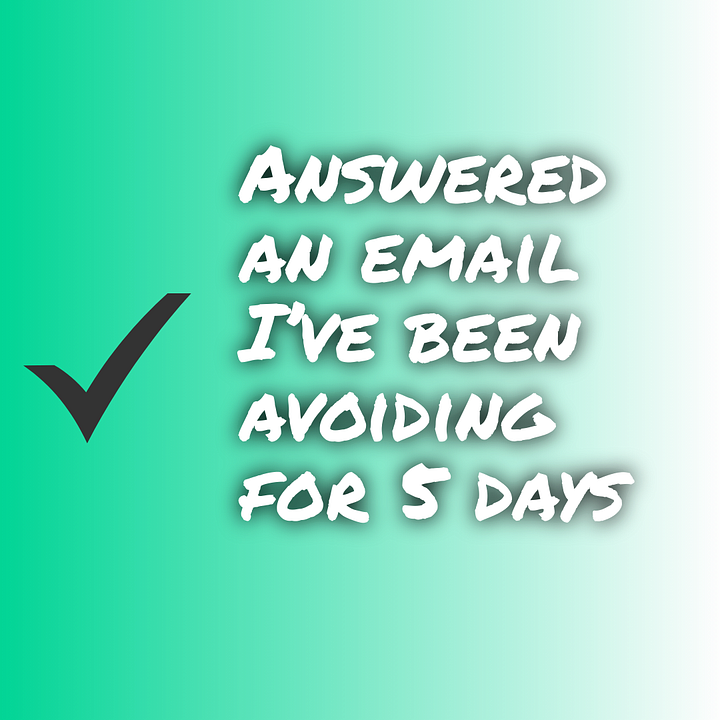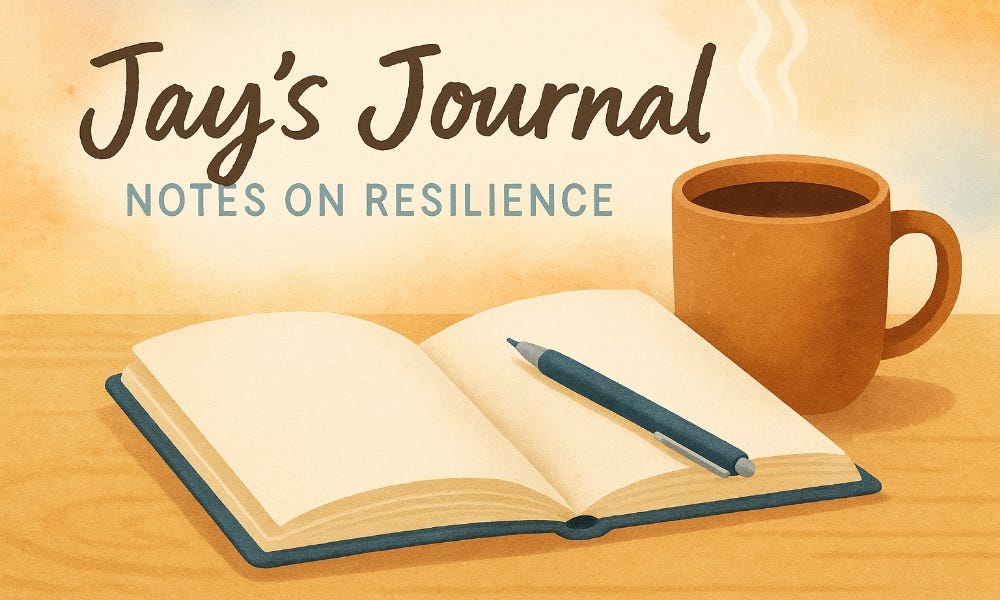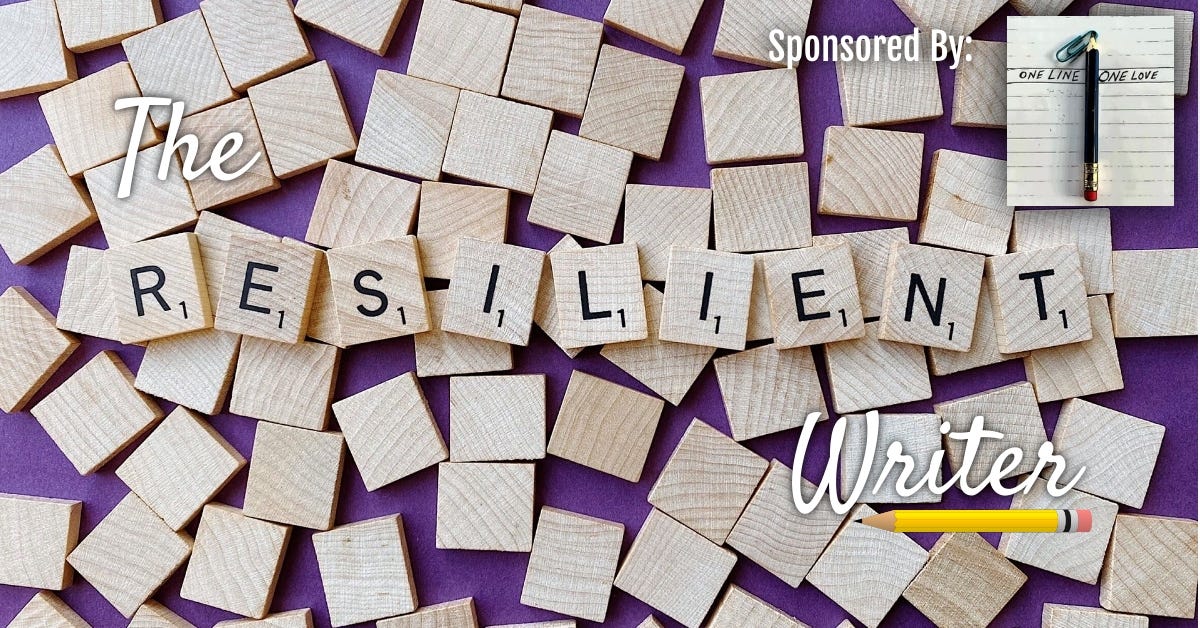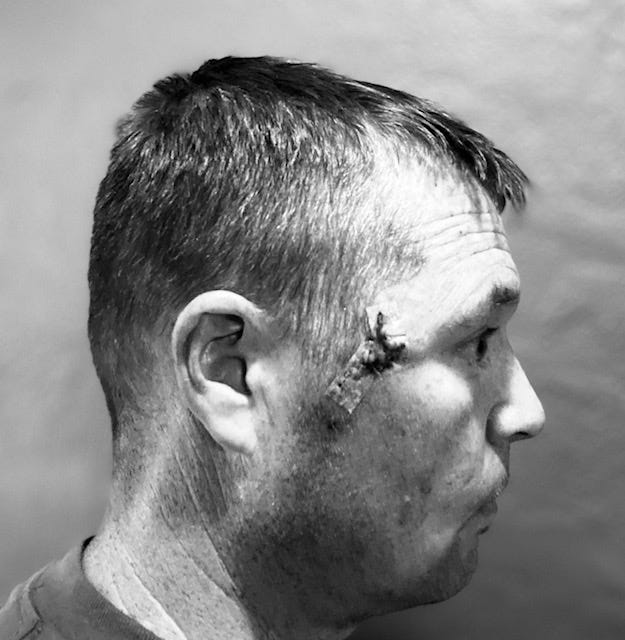An Invitation to My Pity Party
I recently received an invitation—well, more like an emotional summons—to attend a full-blown self-pity party. No formal envelope. Just that low buzz in my chest, the creeping fatigue, the “what’s even the point?” playlist playing on loop in my brain.
If you live with chronic illness or ongoing health challenges, you probably know the type.
It arrived on a Tuesday. Because—of course it did. Tuesdays are the soggy shredded wheat of the week—no weekend glow, just obligation and expired motivation.
The invitation didn’t ask much. Just that I RSVP with despair, show up unshowered and bring a dish of regret to share. Bonus points if I wore existential dread as a hat.
Tempting, right?
I’ll be honest: I hovered over the “yes.” Some days, emotional burnout feels like a weighted blanket I want to sink into. It says, “Shh, don’t fight it. Just let yourself spiral.” And who doesn’t love a good spiral now and then? Especially the dramatic kind—with moody lighting, self-doubt hors d'oeuvres, and overly long inner monologues.
But then I remembered something.
Self-pity is sneaky. It starts like mental health self-care—“You deserve to feel your feelings!”—but morphs into self-sabotage in a really convincing bathrobe. It whispers, “no one gets you.” That it’s always going to be this hard. That hope is naive, and gratitude is for people with better mobility and fewer co-pays.
Living with a disability or invisible illness can do that—convince you that your pain makes you separate. Unrelatable. Alone.
But here’s the thing:
I can honor my hard days without throwing a party for them.
I can sit with grief and chronic fatigue without letting it DJ my whole damn playlist.
I can be tired, aching, and a little dramatic without believing that this moment defines me.
And frankly, if I were to attend a party, I’d prefer something with better snacks and at least one person who laughs so hard they snort. (Every good party needs a snorter.)
So today, I’m RSVP-ing “No.”
Not because I’m above it. Not because I’ve figured it all out. But because I’m learning—slowly, stubbornly—that self-compassion gets me further than self-pity ever will.
This is what resilience with chronic illness really looks like. Not a motivational speech or viral triumph—but just… not spiraling today. .
And maybe tomorrow, I’ll get another invite. I probably will. Disability doesn’t take a day off. Neither does doubt.
But I’ll let out sigh and say:
“Thanks for the offer, but I’ve got better plans. And plus I’m not a big fan of Taylor Swift’s music.”





The Get Up— A Chapter from “Bedtime Stories for the Living”
On December 25, 2020, just after a family pancake breakfast I fell in the doorway between the dining room and living room.
Haley and Chase were somewhere taking inventory of their Christmas presents and Dylan sat at the table, unblinking, playing the Nintendo Switch Santa brought him.
I suspect most of us have never seen ourselves fall. The severity of our falls are measured by the reactions of others. The oohs and ahhs. The shrieks, the gasps, the sighs. But what if no one witnesses our fall?
Since I’ve never seen myself fall I can only describe it as a moment of pure panic. As if blindfolded, pants ringing my ankles, a pair of unlaced roller skates on my feet, and pushed on an ice rink, surrounded by 100 high school bullies armed with gas-powered leaf blowers on full tilt.
It’s happening. The motherboard in my head flickers like someone spilled orange juice on it. Blip. Blip. Gravity pulls. I reach for the kitchen table with my left hand as my right arm windmills and windmills and windmills. Both knees lock then liquefy. The tendons in my left shoulder, still tender from a fall in September, scream and I jerk my left hand from the table like it’s a hot stove. Blip. Blip. Gravity pulls. My right hand swipes for a wall that’s too far. I’m going down. I turn my head sideways and my knees, no longer liquid, but bony and real, piledrive the kitchen tile. I’m face down on the kitchen floor, holding my breath, staring at pancake crumbs under the table.
“What was that!?” Cindy yells from the kitchen.
“I think dad just fell,” Dylan replies. (I later found out he never took his eyes off of his Nintendo.)
There are footsteps, the electronic jingle of Mario Kart, and Frank Sinatra sings “Let it Snow” of the living room speakers.
“Oh my God, are you okay?”
“I think I’m fine.”
“Does anything hurt?”
“Hang on.”
When I first started falling, I would try to bounce up quickly hoping to create the illusion the fall never happened. But I’m older now. Less spry. Tired. And reluctantly, more accepting in a there’s-no-use-in-crying-over-spilled-milk kind of way. So I lay there and conduct a head to toe body scan to see if any areas need immediate medical attention.
Face: I run my tongue over my teeth. I sniff. I blink a few times. Good.
Shoulders: I wiggle my left shoulder. Then my right. Good.
Hips: I shift my weight to my right hip. Then the left. Good.
Knees: There’s some throbbing in both knees but when I flex them the pain doesn’t increase. They seem to be okay.
“No, I think I’m good.”
“Do you want me to help you up?”
“No. I’m fine. Just let me lay here for a while.”
I’m embarrassed. Frustrated. Defeated. I hate falling. Yes, I hate the physical pain falling brings but what hurts more is the emotional pain in falling causes. A few months ago, my doctor used the term “movement disorder.” Seven years of living with a hole in my brain I had never considered the term movement disorder.
“Your increased falling might indicate the movement disorder is advancing.”
But you don’t have to have a hole in your brain to have a movement disorder. Don’t we all fear moving forward? The embarrassment and shame that result from falling and failing? A new career. A new school. A new relationship. A new resolution. The fear of moving forward, taking action petrifies us into a physical and moral freeze. We are scared to move.
I guess it makes sense that one of the final things I write in 2020 is about falling down. A year in which the whole world fell down. Throughout the year, I heard the line, “I just want things to go back the way they were.” But going back or remaining in the same unwanted place or situation is a movement disorder. Don’t fool yourself, not moving is a movement disorder. We all resist change. Especially, when we’re forced to change. Like we did were forced to change in 2020. But we adapted. We grew accustomed to the “new normal.” We “masked up” and leaned into the changes of 2020 and adapted to the present.
Cindy is back in the kitchen washing dishes. On my knees, I tell myself to “get up” and hold the edge of the kitchen table and pull myself up until I’m on my feet again. Dylan thumbs the Nintendo buttons. Cindy washes dishes. The other kids do not investigate the thud. Frank Sinatra pleads the winter sky to keep snowing.
No one witnesses my get up. No one hears my “get up” but me. So I stand like an invisible suburban superhero with pancake crumbs clinging to my chin.
In my work with the National Ataxia Foundation, I’ve met many people who’ve been afflicted with ataxia their entire lives. A lifetime of falling. A lifetime of getting up. I am always humbled and inspired by their stories. Their courage and fortitude to get up and keep going, everyday, despite knowing the next fall looms in the not too distant future.
We all have a private voice in our head. Our private voice is our coach, our narrator, our companion, and maybe our greatest enemy. What we tell ourselves in our hard, earthly minutes will affect the hours, weeks, months, and years that follow. The trajectory of our lives often depends on what the voice inside our head says and the language it uses when we’re face down on the kitchen floor.
I know Christmas morning is not the right morning to sit the kids down and give them a dad lecture: Developing your internal voice: How to condition yourself to triumph over hard times. Instead, I’ll write this so that maybe in 2040, when my kids are stressed and frustrated with their adult lives, and they surf the internet for answers, they can read about how their dad fell on the kitchen floor on Christmas morning of 2020, how no one seemed to care, and how he got up.
If something should happen to me and this book is my only way to communicate with my kids in the future—I want them to know that their internal voice is the most powerful thing they will ever own (more powerful than a gas-powered leaf blower). Do not ignore the power of that voice. Do not let other people’s external voice trump your internal voice. Just because an external voice is louder than your internal voice doesn’t mean it deserves to be listened to. Take time to condition an internal voice that is strong and reliable.
A voice you can trust.
A voice that will help you overcome life’s challenges.
A voice that urges you to, “Get up. Grab a broom and start sweeping.” The kitchen floor is a mess.
Purchase Link: Bedtime Stories for the Living
💌 Know someone who needs this?
Forward this newsletter to a friend, a fellow weary warrior, or that one person who gets it. You never know who’s sitting quietly, waiting to feel seen.
And hey—if they roll their eyes at emotional honesty and self-deprecating wisdom, that’s okay. Forward it anyway. You’ll be doing your part for the greater good (and possibly annoying them just enough to spark reflection).
Or check out my books—resilience looks great on your nightstand!
Soft Pants👖 Strong Spirits 🔥Can't Lose!
One Line, One Love: The Resilient Writer
🎙️ Episode 72: In this episode, when Jay tells the story of the day he saved his four-year-old son’s life, it’s not just gripping—it’s gut-level human. There’s fear, tenderness, and even an unexpected laugh or two (because that’s how real life works). Gail listens in, then the two reflect on the strange magic of memory—the way our most terrifying moments can become some of our most powerful stories. Together, they explore how memory becomes a mirror, a map, and a microphone. A must-listen for anyone who’s ever lived through something they didn’t know how to talk about—and wondered if maybe the telling could be its own kind of healing.
Jay Armstrong is an award-winning author and speaker who refuses to be defined by his diagnosis of a rare neurological disease. Despite challenges with movement, balance, eyesight, and speech, Jay continues to press forward with determination, humor, and hope. As the leader of the Philadelphia Ataxia Support Group, he’s dedicated to helping others find joy, peace, and meaning in their lives, no matter the obstacles they face.









